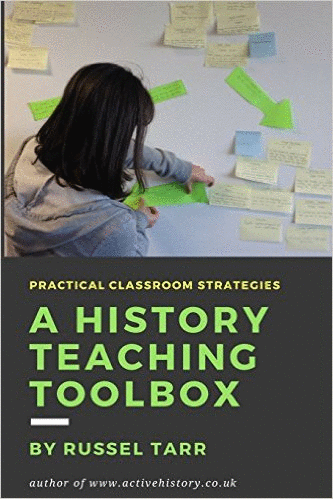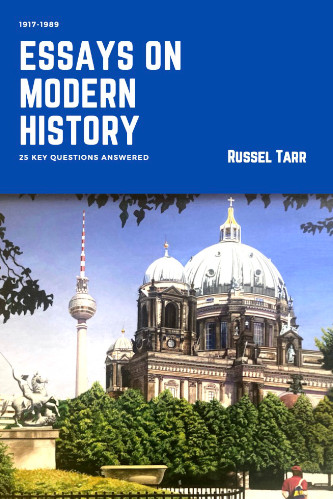Transform your history classroom
ActiveHistory provides educational, award-winning interactive simulations, decision-making games, self-marking quizzes, high-quality worksheets and detailed lesson plans for the school history classroom. All resources have been designed by full-time history teacher Russel Tarr.
An ActiveHistory subscription provides everything you need to construct and deliver a History course from start to finish for the entire 11-18 age range!
These consist not just of lesson plans, worksheets and teacher notes, but also multimedia lectures and interactive games and historical simulations ideal for remote learning and self-study.
World History teaching resources for the high school classroom: lesson plans, worksheets, quizzes and simulation games for KS3, IGCSE, IB and A-Level teachers.
In this study, students will focus on Japan in the age of the Samurai.
The Silk Roads connected the Roman Empire in Europe to Asia and Africa in the Ancient World. When these routes were disrupted following the fall of Constantinople in 1453, the Portuguese pioneered new Spice Routes. The Spanish, in an attempt to find a new route to the spice islands in the Indies, headed Westwards and landed on the coastline of the American content, where they encountered the Aztecs, the Incas and the Mayans. Venturing even further, other explorers were able to reach Japan.
Introductory Video
Japan and Europe: Mapwork
For Medieval Europeans, the main trade route was the Silk Roads between Italy and China. The link between Europe and Asia was Constantinople, the Eastern capital of the Roman Empire. However, the seizure of Constantinople by the Muslim Ottoman Empire in 1453 cut off Europe’s overland access to the Far East. This inspired several European nations to find an alternative, sea-based route to Asia. The Portuguese led the way by navigating around South Africa’s Cape of Good Hope to reach the legendary Spice Islands in Indonesia. The Spanish and the British, blocked from following the same route by Portuguese military bases, desperately tried to find an alternative route to the Spice Islands by sailing West across the Atlantic. This brought the Spanish to the “New World” of South America, where they encountered the Aztec, Mayan and Incan civilisations. The British, as well as establishing early settlement in North America, went around the tip of South America and sailed across the Pacific to contact one of the most mysterious countries of all: Japan. Predictably, they found that the Japanese had got their first!
Japan in the Sungoku Period - A Time of War
Through this worksheet, students learn that the16th century is known in Japan as the Sungoku (“warring states”) period. Although Japan had an emperor, he was largely powerless in the capital city, Kyoto. Instead, powerful warlords known as Daimyo fought one another for control of the country. One way of doing this was by using Ninja warriors, who were professional spies and mercenaries who gathered intelligence and launched sneak attacks upon the enemy. Much more important, though, were the vast armies of warriors known as the Samurai (“those who serve”). The Samurai had a strict code of conduct called bushido (“The Way of the Warrior”). Bushido is also the guiding principle behind kendo, one of several martial arts (such as judo and jujutsu) that originated in Japan.
Do you have what it takes to be a Samurai Warrior? | Source Material for the Activity | Teacher Helpsheet
The year is 1554. You are a group of European explorers who have been shipwrecked in Japan. You have been brought before Oda Nobunaga, Daimyo of Noguya Castle. He is preparing for war against his neighbours as part of his bid for total control of Japan. He is tempted to execute you all as spies. However, he is prepared to spare those of you who prove to be willing and able to become Samurai warriors and join his army! To decide whose lives to spare, he has divided you into groups of 4-5 people. Each team will try to convince him that they will make the best Samurai warriors. The victorious team will gain honour and riches. The vanquished will face the sword...!
Card Game - Who were the Greatest Samurai?
In this card game, students compete with each other to learn the most about thirty of the most legendary Samurai, and the clans to which they belonged. At the end of the game, they discuss how to categorise the Samurai and their clan symbols in a meaningful way and conduct further research on some of them.

A small selection of the 30 playing cards included in the game!
Japan in the Tokugawa Period - A Time of Peace
By the end of the century, unity had been gradually restored through the efforts of three warlords known as the "Great Unifiers": Oda Nobunaga (1534 - 1582), Toyotomi Hideyoshi (1536 - 1598), and Tokugawa Ieyasu (1543 - 1616). Each of these obtained the prized title of Shogun (supreme general) from the emperor. The Battle of Sekigahara (1600) brought the Sungoku period to an end. The 17th Century began a long spell of peace and stability known as the Tokugawa period (named after the ruling family) or Edo period (named after their home city, which is modern-day Tokyo). The Edo period was characterized by peace, economic growth, social stability and popular enjoyment of arts and culture. It set the stage for Japan's modernization in the subsequent Meiji Period (1868 - 1912).
Japan in the Edo Period - A Time of Culture | accompanying teacher slideshow of images
The Edo period brought stability to Japan. As violence and warfare became a thing of the past, Japan’s arts and culture began to thrive under the leadership of a series of Emperors and their Shoguns. Because the Edo period also saw Japan rejecting foreign influence and isolating itself, this culture became particularly distinctive from that of other countries - and remains to this very day! In this activity, you will learn more about the culture of Japan, and use your findings to produce your own virtual exhibition or travel brochure.

© 1998-2025 Russel Tarr, ActiveHistory.co.uk Limited (Reg. 6111680)
1 Torrin Drive, Shrewsbury, Shropshire, SY3 6AW, England
Privacy Policy | Contact






